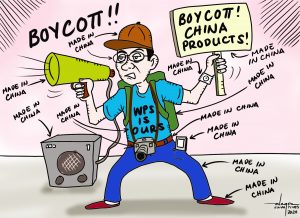
This is something that at first glance, appears unusual. But for the Land Transportation Franchising and Regulatory Board (LTFRB), this has become the usual thing to happen.And we mean when one unit of a transportation company is involved in a deadly crash due either to human error or unit maintenance inadequacy, operation of all other units under the franchise issued to the transport operator is suspended.
There is no question that at one time or another one or two drivers of a transport company may be negligent of their responsibilities. It is also beyond arguing that the involvement of some units of a public transport firm in accidents is traceable to complacency on the part of the management as far as treating issue of vehicle maintenance as utmost in such kind of business.
But why stop the operation of all the other units just because one driver is infidel in his job of transporting people to their respective destinations safely? Why deny other drivers, conductors, and other company employees their right to earn a decent living as part of a sanction to a transport firm one driver of which happened to be reckless, or its management disregarding safety of the commuters patronizing their vehicles by taking fleet maintenance for granted?
If several public utility buses of a transport company have been plying routes beyond what is authorized by its franchise, why not the LTFRB just impound the vehicles used to ply the destinations not authorized under the franchise given to the bus company?
In the case of the deadly smash-up of a Davao Metro Shuttle and a Bachelor Express buses at Km 92, Barangay Magsaysay in Nabunturan, Compostela Valley Province last Feb. 4, 2019 there were broadcast reports saying that the Metro Shuttle bus was on its way to Veruela, Agusan del Sur from Tagum City in Davao del Norte. According to the same broadcast reports the route is not part of the franchise issued to the bus company.
If indeed the reports were true then it can be safely assumed that it is not only one unit that is plying the Tagum-Veruela route, there could be more.
May be the LTFRB has the coercive power to have the bus firm management disclose how many other units they have fielded the said route and identify the said vehicles. When this is complied, the fair thing that the LTFRB can do is impound all the concerned units and impose heavy fines on the management.
Of course, if its investigation on the incident will reveal other major infractions committed by the Davao Metro Shuttle then the agency can proceed with the suspension of the bus company’s operation. It can also impose on management still much higher fines, and if the situation warrants such as the company failing to comply with LTFRB requirements, then it can proceed to revoke the franchise of the bus firm.
We believe that the non-erring drivers and other transport employees should not be made to suffer for the possible negligence of the driver involved in the accident, or for the irresponsibility of management in ensuring A-1 maintenance of all the company’s units.
************************
Even at this early stage of the government’s Manila Bay Rehabilitation project the initial result – a beach front almost totally free of garbage and other water borne debris — is getting favorable reviews from the public. Even foreigners frequenting the bay area find the place amazingly clean.
This open appreciation by the public alone is enough reason for the people behind the rehabilitation project to persevere more even if they have to risk being at odds with powerful business and personal interests.
But it now appears that President Rodrigo Duterte’s political will has rubbed in on the people hoping to restore the famous Manila Bay to its former status — an iconic viewing spot of a beautiful sunset.
The near garbage free-beach front of Manila Bay however, does not mean the waters are clean as well. Health and environment authorities are emphatic in their reminder that the waters are far from safe for bathing and swimming. The presence of harmful bacteria from human, animal and toxic waste water from industrial plants and commercial establishments remain exceedingly high. And the first potential casualty is an 11-year old girl who is still in the intensive care unit (ICU) in a Manila hospital. She had drunk a huge volume of bacteria-laden sea water after she nearly drowned while swimming in the beach water of the bay.
Of course it is not only the Manila Bay that is in need of rehabilitation or massive clean-up. Right here in Davao City we have beach areas the water of which are being pumped with millions of harmful bacteria from the dirty waters of the city’s main rivers and waterways.
Yes, the waters of the city’s main rivers and waterways are dirty as effluents from drainage pipes and canals are emptied into it. And where does the river waters go but to the sea shore. And take a highly observant look at Davao City’s beach front areas. These are now thickly populated with informal settlers. Others are sites of business establishments like low-cost resorts, eateries, motels and inns all disposing waste direct to the beach.
This situation must be a cause for serious concern of the local and national officials. Even at this time we can already see a possible scenario of the kind of beach waters the city will have in the very near future. A Manila Bay right here in Davao Gulf.

